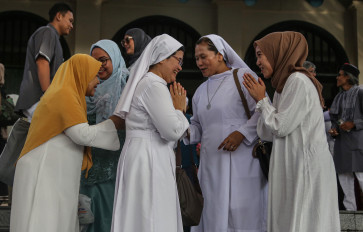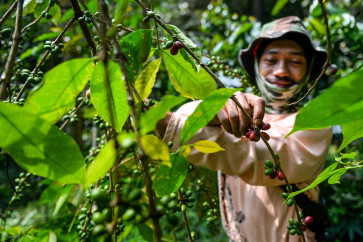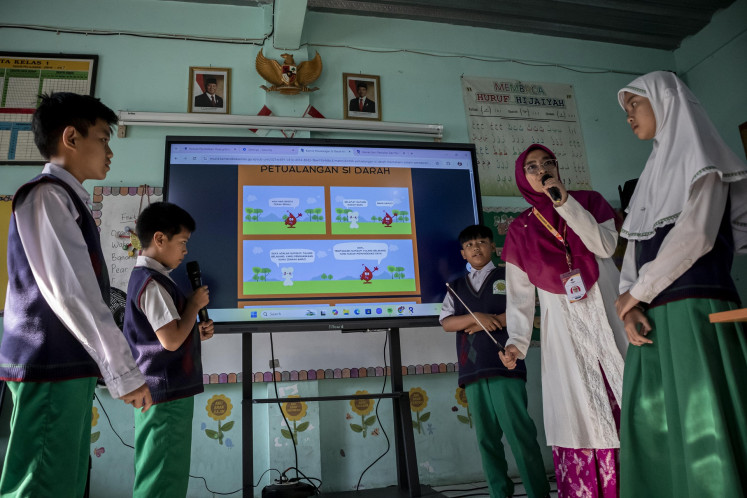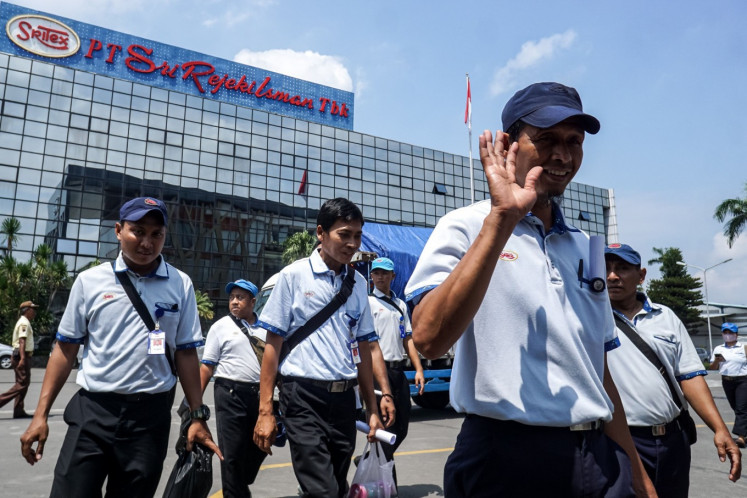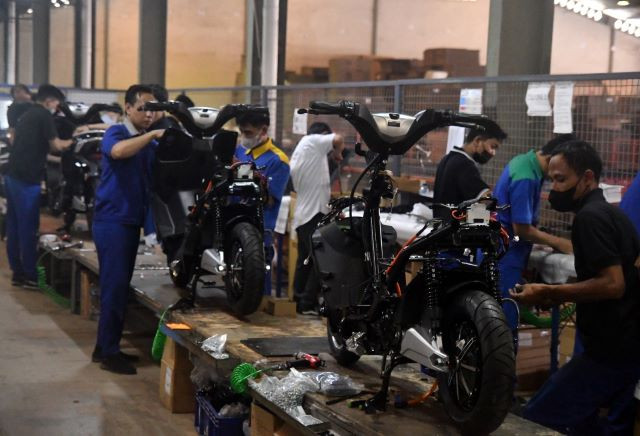New Kampung Akuarium brings hope for better living
Change text size
Gift Premium Articles
to Anyone
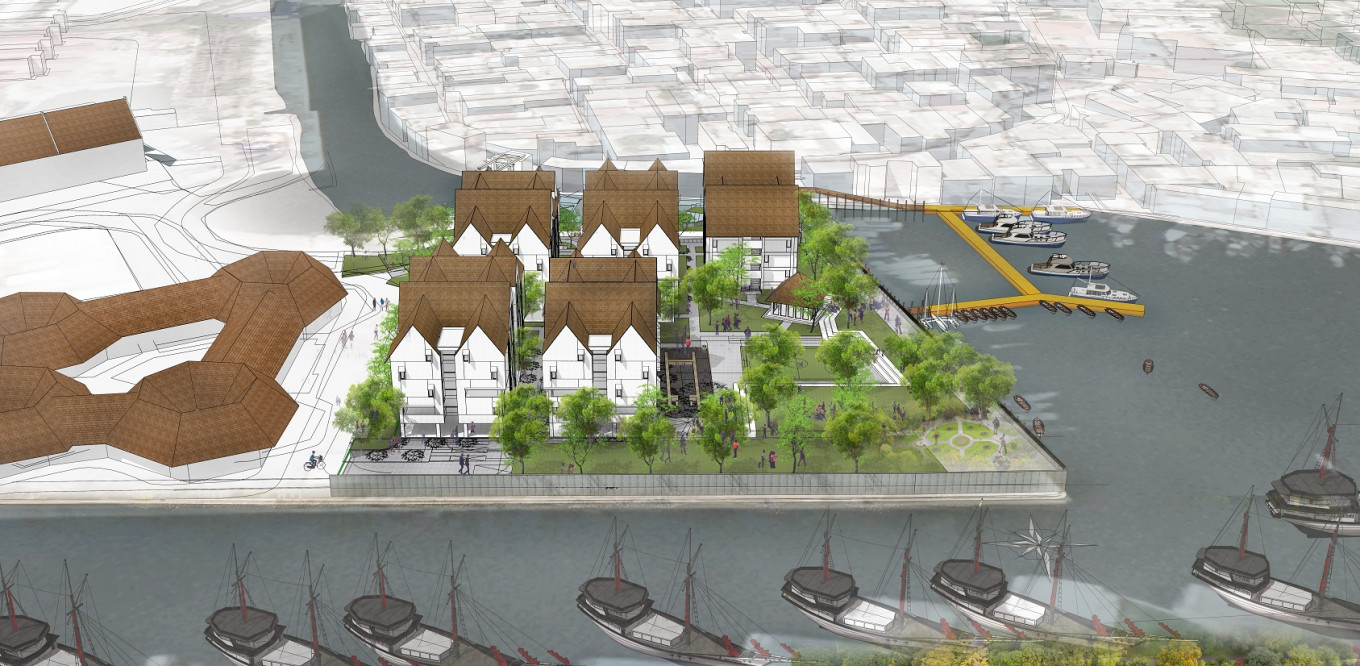
R
esidents of Kampung Akuarium in Penjaringan, North Jakarta, have had countless meetings discussing the fate of their settlement since a forced eviction in 2016.
Indonesia's 75th Independence Day on Monday seemed to mark a turning point for the residents, because on the occasion, the Jakarta administration held a groundbreaking ceremony to reconstruct Kampung Akuarium despite controversies surrounding the project's legality.
Kampung Akuarium is among 21 kampungs prioritized for revitalization in Jakarta under Governor Anies Baswedan.
The residents’ future home in Kampung Akuarium will be very different to their previous settlement of predominantly landed houses in informal urban settings. They have decided to rebuild the area with a kampung susun (vertical village) concept.
A resident and coordinator of local community forum Dharma Diani, Yani, said they were determined to shake off their kampung’s slum label in order to live better lives moving forward.
“What is a healthy kampung? What are the terms? What does spatial planning mean? We dug into these topics so we could gain certainty over our future and live decent lives," she told The Jakarta Post on Wednesday. "Whether we wanted it or not, now we have all agreed to develop a vertical kampung.”
She said the design they made offered a concept that was different from Jakarta's typical rumah susun (low-cost subsidized apartments), which were often “bland and cold”.
The new Kampung Akuarium design will accommodate plenty of social interaction, which has become a part of the identity of their community, with bonding between neighbors having strengthened since the eviction.
In an attempt to create the most suitable design, think tank Rujak Center for Urban Studies (RCUS) assisted in the planning process.
“We provided technical explanations and input about the design. The residents are the ones who made the decision,” said Andesha Hermintomo from the RCUS.
The design the residents agreed on was split-level vertical housing, referring to a style of building with staggered floor levels to allow neighbors to live in close proximity, Andesh said.
“Residents decided that a split-level design would better accommodate everyday social interactions, while at the same time bringing out the distinguishing characteristic of the kampung," he said.
Set to be built on a 10,384-square-meter plot of land, the kampung susun will provide decent housing for more than 700 residents. The project will feature five housing blocks with a total of 241 apartments, the same as the kampung’s number of apartments before the eviction.
The residential blocks will make up 40 percent of the total area, while the remaining 60 percent will be dedicated to green space and common areas, like parks, a basketball field, an amphitheater, a mosque and urban farms. It will also have its own waste management system.
Each block will have a basement dedicated to various public services, such as a health clinic, a funeral home, a library, a local cooperative office and some warung (kiosks).
“The design has met the fire safety standards of Jakarta’s Building Experts Team, including the number of emergency stairs, door positions and corridor sizes,” Andesh said.
Located near cultural heritage sites, such as the Maritime Museum and the Heksagon fish market, the project is designed to blend in with its surroundings rather than stand out.
"So Kampung Akuarium will not only be a complement to its surroundings but also emerge as a new tourist destination," Yani said.
The residents are now planning to allocate space in one of the buildings for a mini gallery to remember their four years of struggling without certainty over their future housing.
“We want to have something to showcase our long endeavor; perhaps our grandchildren will see that. It is also to prove that a sustainable kampung susun does exist,” Yani said.
The redevelopment project, costing at least Rp 62 billion (US4.16 million), is expected to be completed by December next year. It is funded under a developer obligation fund from PT Almaron Perkasa, a subsidiary of property giant PT Lippo Karawaci, according to acting Jakarta Housing and Settlement Agency head Sarjoko.
With the project having now begun, one tough task awaits the residents: figuring out how to properly manage the area on their own.
The local cooperative would organize the management of the area, but it would certainly require all residents to work together to build their neighborhood, Yani said.
“[The challenge ahead] is how we manage and further develop the area for our own good and better prosperity. Insya Allah [God willing], we will prove that we can [manage] this area,” she said.


